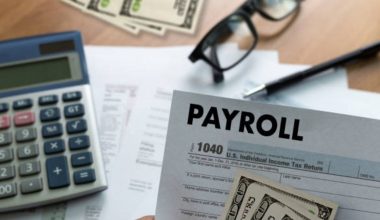A general ledger is used to record all financial transactions within a company and contains the critical information required to prepare financial statements. General ledgers are used by businesses that use double-entry bookkeeping to record their business transactions. Each transaction must have both a debit and a credit entry, with debit entries recorded on the left side and credit entries recorded on the right side, according to double-entry accounting. At all times, the debit balance should equal the credit balance. We’ll look at what a general ledger is, why it’s important, and how to use it in this article. More specifically, we’ll look at the general ledger and its example in accounting.
What is Ledger In Accounting?
An accounting ledger is a bookkeeping account or record that stores balance-sheet and income-statement transactions. Cash, accounts receivable, investments, inventory, accounts payable, accrued expenses, and customer deposits are examples of accounting ledger journal entries. Accounting ledgers are used to record all balance sheet and income statement transactions. Asset ledgers, such as cash or accounts receivable, are included in balance sheet ledgers. Revenue and expense ledgers are examples of income statement ledgers.
The accounting ledger, also known as the general ledger (GL), is the backbone of any corporate financial system because it serves as a centralized repository for all account data rolled up from sub-ledgers or modules.
Additionally, the accounting ledger is used to generate the company’s key financial statements, including the income statement, cash flow statement, and balance sheet. The bookkeeping process of recording credits and debits is known as “posting” to an accounting ledger. The accounting general ledger can be thought of as a collection of the chart of accounts, which is where all accounting journal entries end up.
How Do You Write an Accounting General Ledger?
Most businesses use accounting software that automatically posts all financial transactions to the general ledger. However, to create your general ledger, you must first understand the fundamentals of double-entry bookkeeping.
Each financial transaction in the double-entry system affects at least two different ledger accounts. Each entry is recorded in two columns of the ledger, with debit postings on the left and credit postings on the right. The sum of all debit and credit entries must be equal.
The following is how to create your ledger and use it:
Step 1: Set up Ledger Accounts
Begin with the five types of accounts: assets, liabilities, equity, revenue, and expenses (and perhaps Other Income and Expenses). List the accounts you require under each account type. For example, under the Asset account type, create a cash account and an accounts receivable account.
Step 2: Create Columns
Make columns for the date, transaction or journal entry number, and description on the far left of the page.
Create columns for debits, credits, and running balances on the right side. Debits raise asset and expense accounts while decreasing liability, revenue, and equity. Credits increase liabilities, revenue, and equity while decreasing assets and expenses.
Step 3: Keep Financial Data
Record your business transactions as they happen daily. If you’ve made a journal entry, immediately post it to the ledger.
Step 4: Create a Trial Balance
To create your trial balance report, sum the ending balances from the general ledger in accounting and present account-level totals. The trial balance totals are compared and used to generate the financial statements.
General Ledger In Accounting
In accounting, a general ledger is the foundation of a system used by accountants to store and organize financial data used to create the firm’s financial statements. Individual sub-ledger accounts are defined by the company’s chart of accounts, and transactions are posted to them.
The transactions are then closed or summarized in the general ledger, and the accountant generates a trial balance, which serves as a report of the balance of each ledger account. The trial balance is checked for errors and adjusted by posting additional required entries before being used to generate the financial statements.
What Is the Purpose of a General Ledger?
A general ledger is used in accounting to record all of a company’s transactions. Transactional data in a general ledger is classified as assets, liabilities, revenues, expenses, and owner’s equity. The trial balance is prepared by the accountant after each sub-ledger has been closed out. The trial balance data is then used to generate the company’s financial statements, which include the balance sheet, income statement, cash flow statement, and other financial reports.
How Does a General Ledger Work With Double-Entry Accounting?
A general ledger is used in accounting by businesses that use the double-entry bookkeeping method, which means that each financial transaction affects at least two sub-ledger accounts and each entry contains at least one debit and one credit transaction. Double-entry transactions are recorded in two columns, with debits on the left and credits on the right, and the total of all debit and credit entries must balance.
The following is the accounting equation that underpins double-entry accounting:
Stockholders’ Equity = Assets – Liabilities
This format is followed by the balance sheet, which displays information at the account level. For example, in the short-term assets section, the balance sheet shows several asset accounts, including cash and accounts receivable.
The double-entry accounting method is based on the accounting equation’s requirement that transactions posted to the accounts to the left of the equal sign in the formula equal the total of transactions posted to the account (or accounts) to the right.
The balancing rule always applies, even if the equation is presented differently (for example, Assets = Liabilities + Stockholders’ Equity).
Ledger In Accounting Example
Cash accounts receivable, inventory, fixed assets, accounts payable accrued expenses, debt, stockholders’ equity, revenue, cost of goods sold, salaries and wages, office expenses, depreciation, and income tax expense are all examples of general ledger entries in accounting.
The Difference Between a Journal and a General Ledger
A journal is used to keep track of transactions that are not payroll, payments, or receipts. The date, the account to which the amount is to be debited, the account to which it is to be credited, and a brief description are all included in journal entries. The journal is the first place where information is recorded.
The journal, also known as the primary book of accounting or the book of original entries, employs a double-entry system to provide summarized records of transactions. Journalizing is the process of recording entries. In a journal, transactions are recorded in chronological order for easy reference, and there is no place to balance.
The ledger, also known as the principal book of accounting, records the balance for each line and contains the information from the journal entry in the basic “T-account” format. Posting is the process of transferring entries from the journal to the ledger. Because of the format of the entries, similar transactions must be grouped into the associated account. This data is used to generate the trial balance, which serves as the foundation for the income statement and balance sheet.
Many transactions are recorded in both the journal and the ledger, but the purposes of these accounting tools differ. Unlike a journal, a ledger account can have an opening balance that is the previous year’s closing balance, and everything should be balanced.
Reasons You Need a General Ledger
As a small business owner, it is always up to you (and your bookkeeper or accountant) to determine what is best for you. You might be able to get by without a general ledger, accounting software, or even an accounting system.
But, just to be sure, here are seven compelling reasons why you should use a general ledger to help track and evaluate every financial transaction for your small business:
- It keeps a complete record of all financial transactions.
- It allows you to create a trial balance so that your books balance.
- Furthermore, it simplifies tax filing because all expenses and income are in one place.
- It reports actual revenue and expenses so you can keep track of your spending.
- It immediately alerts you to unusual accounting transactions.
- Likewise, it is easier to detect (and prevent) fraud.
- It assists in the compilation of key financial statements, which are critical for assessing your profitability, liquidity, and overall financial health. The cash flow statement, income statement, trial balance, and balance sheet are examples of these.
What Are the 4 Ledgers?
A ledger also referred to as the principal book of accounts, is a permanent record of all business transactions.
- Sales ledger or debtors’ ledger
- Creditors’ ledger or purchase ledger
- General ledger
What Is a Ledger Entry?
A ledger entry is a record of a commercial transaction. The entry can be made using either a single entry or a double-entry bookkeeping system, but it is most commonly made using the double-entry format, in which the debit and credit sides of each entry always balance.
What Are Debit and Credit?
In a nutshell, debits (dr) record all money that flows into an account, whereas credits (cr) record all money that flows out of an account.
What Are the Two Types of Ledger?
There are two types of general ledger: nominal ledger and private ledger. The nominal ledger records expenses, income, depreciation, insurance, and so on. A private ledger contains private information such as salaries, wages, capital, and so on.
Is the Purchase Ledger a Debit or Credit?
In most cases, the Purchase Ledger Control Account is credited. It is credited when its balance rises and debited when its balance falls.
What Are the 5 Types of General Ledger Accounts?
Assets, liabilities, owner’s equity, revenue, and expenses are the five categories.
Conclusion
A general ledger in accounting allows users to keep track of their financial transactions. It is divided into several accounts that show what assets, liabilities, and equity are, as well as revenues/income and expenses/costs.
This provides insight into how much profit or loss is made in a given period. Ledgers also enable the creation of reports such as balance sheets and cash flow statements, which can be used for decision-making by business owners, managers, and employees.
Users can gain a better understanding of what is going on inside their company with the help of ledgers, allowing them to make more informed decisions and manage their finances more effectively.
Ledger in Accounting FAQs
What are the 4 sections in a general ledger?
The general ledger is a permanent summary of accounts that lists all of your company’s financial information in journals, such as sales, cash receipts, and cash payments. General ledgers include a chart of accounts, financial transactions, account balances, and accounting periods.
What are the 7 basic accounting categories?
7 basic accounting concepts:
- Revenue
- Expenses
- Assets
- Liabilities
- Capital
- Accounts
- Financial statements
What is the T account?
A T-account is a colloquial term for a collection of financial records that use double-entry bookkeeping. A T-account is so named because the bookkeeping entries are organized in the shape of a T. Just above the T is the account title.
- GENERAL LEDGER: Easy Templates, Examples And all you need (+ Free pdfs)
- THE ACCOUNTING CYCLE: Steps, Example and Importance.
- KEYSTONE PRICING Formula, Method, Strategy, Calculator
- Security Risks and Concerns Regarding Bitcoin
- Double-Entry Accounting Explained!!! Definition, How it Works, & Examples
- General Ledger Accounting: All You Need To Know(+Quick Tools)






